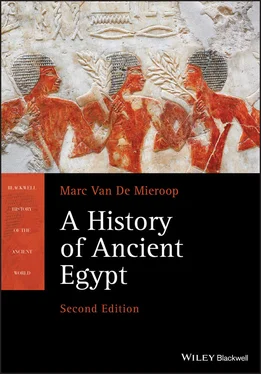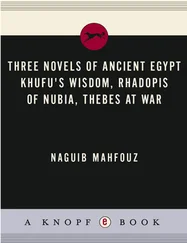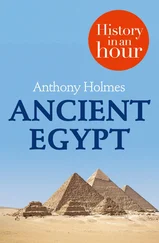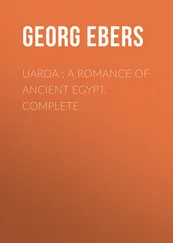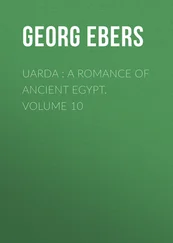At times, we do not know why the Greeks choose a name. The Egyptians called the religious center of the Middle and New Kingdoms Waset. The Greeks referred to the place as Thebes, which is also the name of one of the most important cities in central Greece. Although some scholars suggest that the Egyptian name of a district of Waset inspired the Greeks, it is possible that the city’s leading status was at the basis of the selection.
Sometimes we use the modern Arabic designation of a site as the primary name to refer to a place. Thus scholars most often speak of el‐Kab and el‐Amarna, which are the names of archaeological sites that contain the remains of the ancient cities of Nekheb and Akhetaten respectively. The modern Arabic name can contain traces of the ancient Egyptian one. For example, modern Qift derives its name from ancient Egyptian Gebtu, which became Kebto or Keft in Coptic. Other names show what impressed the later inhabitants in the ancient remains. The city Luxor derives its name from Arabic al‐Uqsur, which means “the palaces.”
Our modern designations are thus a mixed bag that we tend to use indiscriminately, and we mostly ignore their source. The ancient Egyptians often tried to indicate what they thought to be a city’s most important characteristic. For example, Naqada was near the city Nubt, which means gold, and it was called so because of its location across the Nile from the entrance of a wadi leading to gold mines. That may explain the area’s wealth in late prehistory, but our modern term conceals that fact.
By 3400 then, all of the elements of later Egyptian culture were in place. People knew how to farm relying on the Nile, they lived in settlements in the valley, and they buried the dead nearby. Their material remains show that Upper and Lower Egypt were distinct and that in Upper Egypt there was increased social differentiation, especially visible in the ways in which people were buried. Many other characteristics of later Egyptian ideology and world views probably also developed in these prehistoric times. In order to understand these ideas better we have to study the more elaborate information of historic times, however.
1 1. In this book I use the spellings of royal names found in Shaw, ed. 2000: 479–483.
2 2. Many scholars believe that Manetho only listed 30 dynasties (a round number) and that the 31st dynasty, of the second Persian occupation, was added later by the ancient authors who excerpted his work.
3 3. Verbrugghe & Wickersham 1996: 201.
4 4. In this book I follow the dates for reigns provided by Shaw, ed. 2000: 479–483, with some minor changes.
2 The Formation of the Egyptian State (ca. 3400–2686)
He will take the White Crown; he will uplift the Red Crown.
He will unite the Two Powers; he will appease the Two Lords with what they wish.
(Prophecy of Neferty) 1
Throughout ancient Egyptian history the idea that the state was a union between two lands, Upper and Lower Egypt, was sacrosanct. When the lands were not united – in the eras we now call Intermediate Periods – chaos ruled; it was a royal obligation to keep Upper and Lower Egypt together so that order and proper conditions prevailed. Many aspects of royal imagery and titulary expressed that ideal. Among the various crowns a king could wear were an elongated, white crown of Upper Egypt and a box‐shaped, red crown of Lower Egypt. But more important was the double crown that combined the two. In statuary, the sides of royal thrones regularly contained a representation of sedge and papyrus plants knotted around a windpipe arising from lungs ( Figure 2.1). The scene symbolized that the king seated on the throne provided unity, tying together Upper Egypt, symbolized by the sedge, and Lower Egypt, symbolized by the papyrus. In Egyptian the words to unite and lung and windpipe contained the same sequence of consonants, thus the drawing of the lungs and windpipe spelled out the king’s action. Other imagery and many texts likewise showed the ruler as king of Upper and Lower Egypt, an idea explicitly announced in two of his five titles (see Chapter 1). The passage quoted above was just one of many expressions of this concept. It celebrated Amenemhat I, the founder of the 12th dynasty, as the king who brought together the two parts of Egypt and their tutelary gods, Horus and Seth.
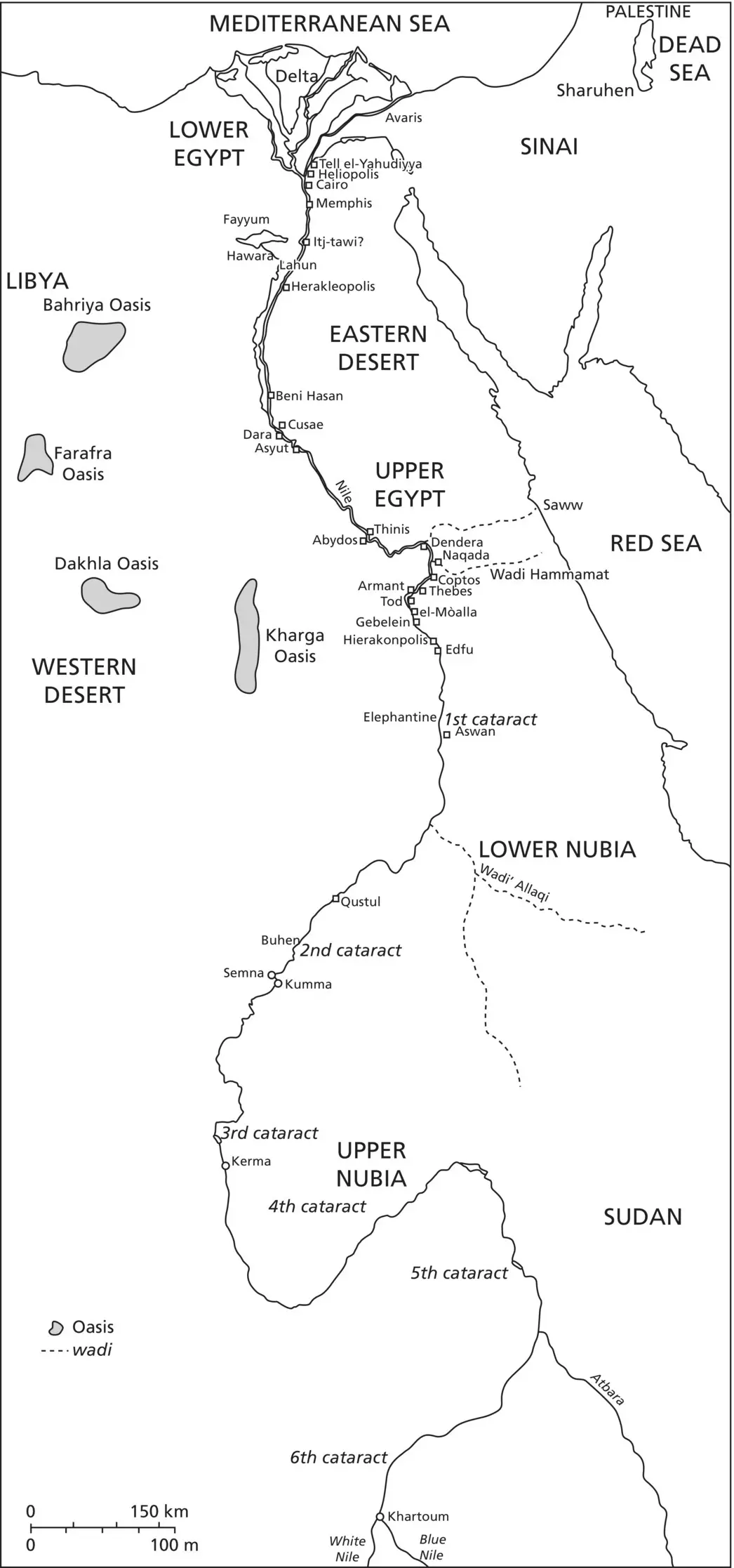
Map 1Egypt and Nubia from prehistory to the Middle Kingdom
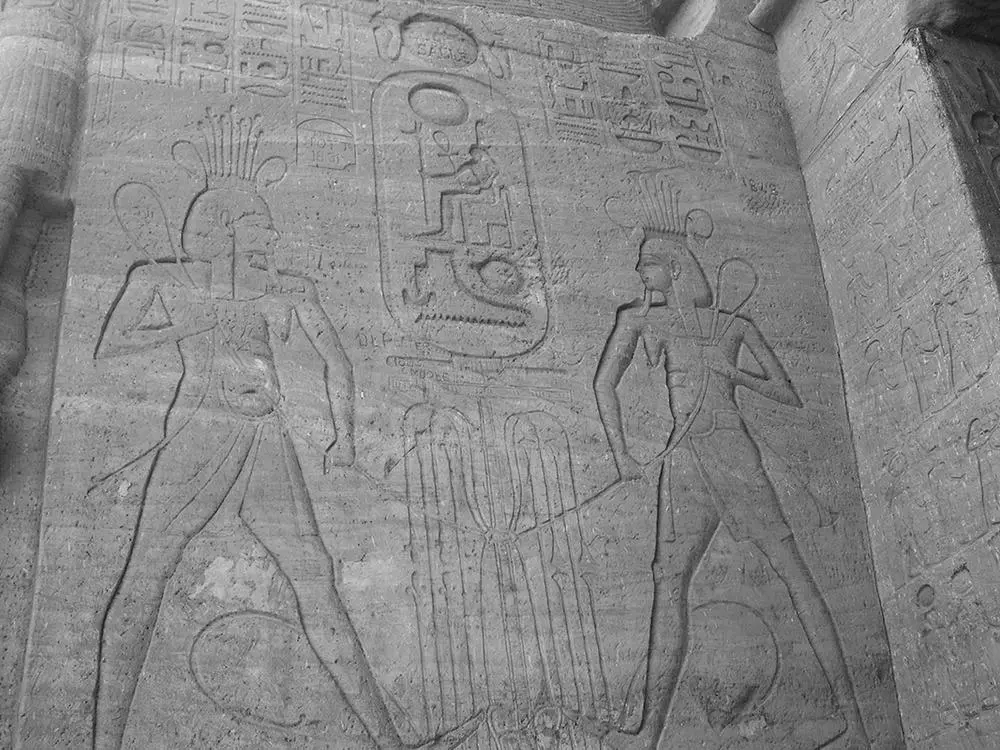
Figure 2.1 One of the most widespread emblems of kingship in ancient Egypt represents the unification of Upper and Lower Egypt, symbolized by two plants, the sedge and the papyrus, tied around the image of a windpipe and lung (the Egyptian word for the organ sounds like that for “to unite”). A cartouche containing the king’s name stands on top of the symbol, and indicates that he maintains the union. The example here appears on the side of Rameses II’s throne on the façade of Abu Simbel.
Photo: Marc Van De Mieroop
Egyptian history starts with the unification of the state, a process that happened around 3000 BC and that established the ideal of political rule for millennia to come. The nature of the early Egyptian state is unusual, albeit not unique, in world history. In most other early cultures, political units that were mostly centered on city‐states coexisted for long periods of time and merged into larger states when one of them annexed its neighbors, thereby creating unions (that were often short‐lived). It often took millennia before territorial states appeared there. Egypt, in contrast, developed relatively rapidly from a village society into a large unified state – in about 400 years. The processes that led to a territorial state are mostly obscure, although the evidence is not scarce. Scholars continue to formulate theories to explain why such a state developed in Egypt, but none has convinced the entire academic community. Everyone agrees, however, that it was a momentous episode in Egyptian history in every respect. Not only was the political model of a united Upper and Lower Egypt established, but also the ideals of kingship as well as the means to glorify and support the king. Writing originated and the canons of art and architecture were founded. The social, economic, and intellectual foundations of ancient Egypt emerged at this moment, and their influence pervaded the rest of the country’s ancient history. It is thus important for us to grasp what happened. Most scholars call whatever preceded the unification Predynastic or Protodynastic, implying a teleology that sees the joining together of Upper and Lower Egypt as the ideal, while the Early Dynastic Period covered the first centuries of Egyptian history until ca. 2686.
The formation of the Egyptian state happened when Egypt emerged from prehistory – the invention of writing is one of the characteristics of the early state – and the written evidence perforce is very limited. Most of our data are archaeological, and within that record cemeteries dominate by far. Moreover, Upper Egypt is much better known archaeologically than the Delta.
Writing itself only slowly expanded into a rendering of the Egyptian language, and its usages grew gradually to include more areas of activity. The first complete sentence written in Egyptian may only date to the late 2nd dynasty. Earlier inscriptions, often found on seals that were impressed on clay, were terse and provided little beyond people’s names and titles. Royal names appear on a large number of objects, however. Wooden and ivory labels containing an image of the king, his name, and some other information are plentiful.
Читать дальше
